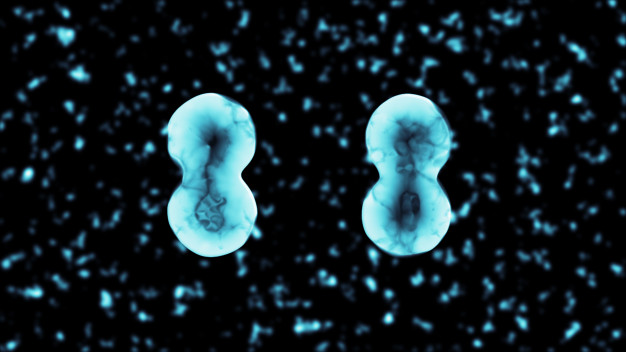In biology, fission is the subdivision of a cell or a multicellular body into one or more parts and regenerates each part into a complete individual. It is a simple mitotic division in which each new cell receives half of the cytoplasm of the parent cell.
The line of cytoplasmic can be either diverse or longitudinal. Examples include protista, monera, etc. Binary fission attains two dividing cells, populations, species, etc., whereas, multiple fission develops more than two cells, populations, species, etc. Prokaryotic fission, which is binary fission, is a variant. Asexual reproduction and cell division are used by all prokaryotes.
What is binary fission?

Binary fission is the division of a single unit into two parts that can regenerate into new organisms that are similar to the parent. Binary fission usually appears in bacteria and archaea (prokaryotes). It is a method of asexual reproduction and is a quick way of multiplying organism numbers.
The two parts resulting from binary fission develop into new entities that resemble the origin with size, structure, and genetic material. Binary fission begins with DNA duplication. The replicated DNA then moves to two opposite sides of the cell, and the cell increases in size. The cytoplasm connects to the equatorial plane and is divided into two parts, each with the same genetic material and cell structure.
What is multiple fission?

Multiple fission is a method of asexual reproduction seen in single-cell protists (protozoans and algae). It is the process of dividing a single unit into several parts that can develop into new organisms that resemble the original.
The nucleus divides into several nuclei as a result of mitosis and the cytoplasm separates into different parts to form new daughter cells.
Difference between binary fission and multiple fission.
The main difference is between binary fission and multiple fission. A single unit is divided into two parts in binary fission while one unit is divided into several parts in multiple fission.
It is the process of dividing a single cell or an organism into two or more parts (divisions) that can regenerate into a new organism that is similar to the parent cell or organism. Fragmentation can occur in two equal parts or more equal parts. Therefore, fragmentation can be binary fission or multiple fission.
| Binary Fission | Multiple Fission |
| Binary fission is the division of a single unit into two parts that can regenerate into new organisms that are similar to the parent. | It is the process of dividing a single unit into several parts that can develop into new organisms that resemble the original. |
| Results in two parts. | Results in many parts. |
| Binary fission appears in bacteria and archaea. | Multiple fission is seen in bacteria and protists. |
| The nucleus is divided into two nuclei. | The nucleus is divided into several nuclei. |
| Forms two daughter cells. | Produces several daughter cells. |
| A single unit is divided into two parts in binary fission. | One unit is divided into several parts in Multiple Fission. |
| It occurs during favorable conditions. | It occurs during unfavorable conditions. |
Summary – Binary Fission vs. Multiple Fission
Binary fission and multiple fission are two asexual methods shown by bacteria and protists. Binary fission produces two parts that have the potential to grow into new organisms while many fission produces many parts that have the potential to grow in their daughter cells. Both methods result in new cells or organisms that are similar to the parent. This is the distinction between binary fission and multiple fission.
if you have any queries or questions regarding this information please share with us.





